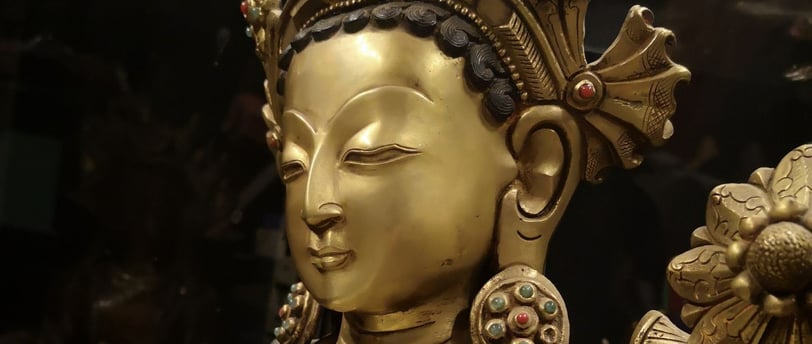A brief history - Origin of the Himalayan Singing Bowl
The origin stories of the Singing Bowl are as numerous and diverse as the bowls themselves. Here we offer a story or two which we here at Vijaya Handicraft hold close to our hearts
5/8/20251 min read


There are many different stories about the origin of the singing bowl—each more magical than the last. The story we at Vijaya Handicraft have fallen in love with is that of Princess Bhrikuti from the 7th century.
In Bhrikuti’s time, Nepal was a more culturally developed country than its neighbors. Buddhism was flourishing, and its art and architecture were highly advanced and respected. Both Chinese and Tibetan travelers were amazed by the refined beauty of Nepali culture; and Princess Bhrikuti’s marriage marked a significant milestone in the political and cultural history between Nepal, Tibet, and China, and in the spread of Buddhism.
Princess Bhrikuti lived during the Licchavi era (c. 450–750 CE), in what we now call Nepal. In Tibetan Buddhism, she is regarded as an incarnation of Tara—the divine feminine. During the 7th century, trade and exchange between Nepal and Tibet were thriving—not only in rice, gold, and other goods, but also in culture, philosophy, and handicrafts. It was during this period that the 16-year-old Princess Bhrikuti married the Tibetan emperor Songtsen Gampo (605–650 CE).
In her royal caravan, she brought with her a group of 80 highly respected Newar artisans from the Kathmandu Valley. But beyond these skilled craftsmen, Bhrikuti also brought Buddhism, and it is said that in one hand she carried a statue of the Buddha, and in the other, a janai-bata—a rice bowl. These ancient rice bowls were made from a blend of seven different metals (copper, tin, zinc, lead, iron, silver, and gold), and were used by royal and noble women for eating—especially during pregnancy, as the special metal alloy was believed to enhance nutrition and purify food of toxins and impurities.
It is therefore likely that this small, refined eating bowl eventually evolved into what we now know as the Tibetan singing bowl.
